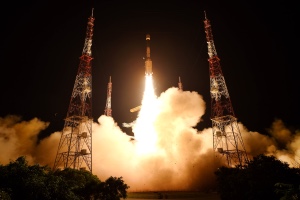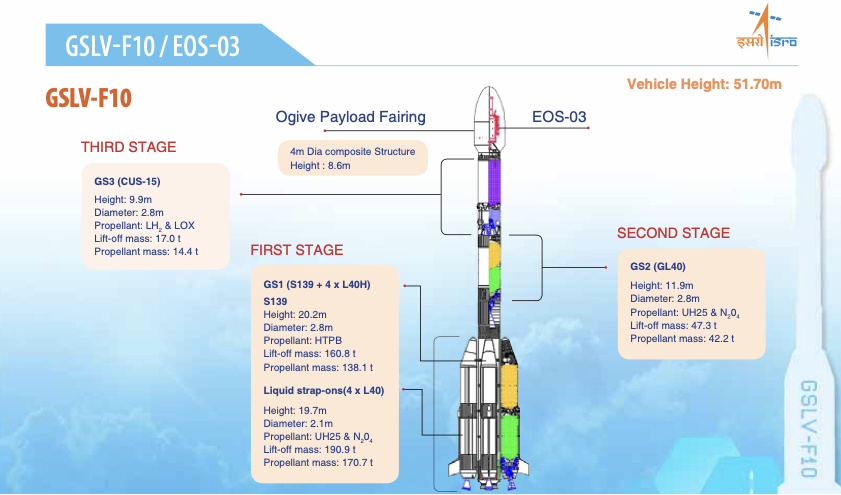
Sriharikota: The GSLV-F10 launch failed to establish Earth Observation Satellite-03 to its intended orbit today after the Cryogenic Upper Stage ignition did not happen due to technical anomaly.
The launch that was expected to place EOS-03, a state-of-the-art agile Earth observation satellite, in a Geosynchronous Transfer Orbit by GSLV-F10, had taken place today at 0543 Hours IST as scheduled. Subsequently, the satellite was to reach the final geostationary orbit using its onboard propulsion system. However, following the technical anomaly, the mission couldn’t be accomplished as intended, ISRO stated.
ISRO though stated that in the run up to the final launch, performance of first and second stages was normal.
Also read: Countdown for the launch of ISRO’s EOS-3 begins
Minister of State for Space, Dr. Jitendra Singh tweeted:”Spoke to Chairman #ISRO, Dr K.Sivan and discussed in detail. The first two stages went off fine, only after that there was a difficulty in cryogenic upper stage ignition. The mission can be re-scheduled some time again.”

This mission was the first flight of GSLV with 4m dia Ogive Payload fairing which can accomodate larger payloads. EOS-03 is the first state-of-the-art agile Earth observation satellite.
The countdown for the launch of GSLV-F10/EOS-03 mission had commenced on August 11 at 0343 Hrs (IST) from Satish Dhawan Space Centre (SDSC) SHAR, Sriharikota.
The objective of EOS-03 is to provide near real time imaging of large area region of interest at frequent intervals; quick monitoring of natural disasters, episodic events and any short term events; and to obtain spectral signatures for agriculture, forestry, water bodies as well as for disaster warning, cyclone monitoring, cloud burst / thunderstorm monitoring etc.
– global bihari bureau





